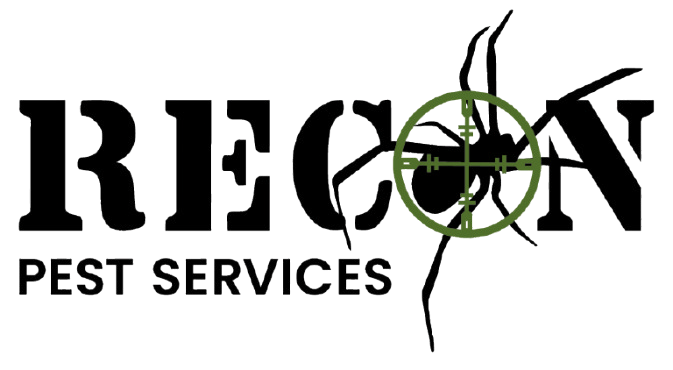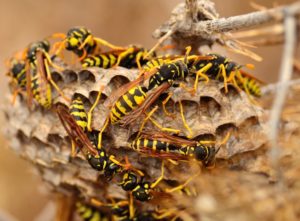Table of Contents
- Understanding the anatomy of a wasp: An overview
- The head: A wasp’s sensory powerhouse
- The thorax: The engine room of a wasp’s movement
- The abdomen: The wasp’s reproductive and defensive center
- The wings and flight capabilities of wasps
- The legs and their specialized functions
- The stinger: A wasp’s primary weapon
- The role of wasp anatomy in their ecological importance
- Discovering more about wasps: Resources and further reading
- Conclusion: Appreciating the intricacies of wasp anatomy
As you venture into the world of wasps, you’ll quickly discover that these fascinating creatures have a complex and intricate anatomy that has evolved over millions of years. With over 30,000 known species, wasps are a diverse group of insects that play a crucial role in maintaining the balance of our ecosystem. Although they can be a nuisance or even a threat to humans, understanding wasp anatomy can help us appreciate their importance and even develop a newfound respect for these often misunderstood insects.
In this comprehensive guide, we’ll embark on a journey to explore the anatomy of a wasp like never before. You’ll delve deep into their sensory, movement, reproductive, and defensive systems, and uncover the secrets behind their incredible flight capabilities and specialized appendages. By the end of this article, you’ll not only have a better understanding of the inner workings of a wasp, but also an appreciation for their ecological significance.
So, if you’re ready to unlock the mysteries of the wasp, let’s begin our adventure into their captivating world!
Understanding the anatomy of a wasp: An overview
Before we dive into the specifics of each part of wasp anatomy, let’s take a moment to familiarize ourselves with the general anatomy of a wasp. A wasp’s body can be divided into three main sections: the head, the thorax, and the abdomen. These sections are connected by a thin waist, known as the petiole, which gives the wasp its characteristic slender appearance.
The head houses the wasp’s sensory organs, including their compound eyes, simple eyes (ocelli), antennae, and mouthparts. The thorax is the center of a wasp’s movement, containing the muscles responsible for powering their wings and legs. The abdomen is the wasp’s reproductive and defensive center, housing their reproductive organs, venom glands, and infamous stinger.
As we explore each section in more detail, you’ll gain a deeper understanding of the astonishing intricacy of a wasp’s anatomy and the remarkable adaptations that enable them to thrive in their environment.
The head: A wasp’s sensory powerhouse
The head of a wasp is a veritable sensory powerhouse, housing the organs responsible for detecting and interpreting the world around them. Let’s take a closer look at the fascinating components that make up this vital section of a wasp’s anatomy.
Compound eyes
Wasps possess two large compound eyes, which are made up of thousands of individual units called ommatidia. Each ommatidium is a tiny, light-sensitive structure that captures a small fragment of the image, which is then combined by the wasp’s brain to create a complete picture. This enables wasps to detect movement, assess distance, and perceive colors, although their vision is not as sharp as that of humans.
Ocelli
In addition to their compound eyes, wasps have three simple eyes, or ocelli, located on the top of their head. These small, light-sensitive structures provide the wasp with a rudimentary sense of light and dark, helping them to orient themselves in their environment.
Antennae
The antennae of a wasp serve a variety of purposes, including detecting chemical signals, such as pheromones, and sensing touch. By waving their antennae through the air or brushing them against surfaces, wasps can gather crucial information about their surroundings, helping them locate food, mates, and suitable nesting sites.
Mouthparts
A wasp’s mouthparts are designed for both biting and sucking, allowing them to consume a wide range of foods. The mandibles, or jaws, are used to bite and chew solid food, while the tube-like proboscis enables them to drink nectar, fruit juices, and the bodily fluids of their prey. This versatility in feeding habits is one of the factors that have contributed to the success of wasps as a group.
The thorax: The engine room of a wasp’s movement
The thorax of a wasp is the engine room of its movement, containing the muscles and structures responsible for powering its wings and legs. As we delve into this section of a wasp’s anatomy, you’ll uncover the secrets behind their remarkable agility and speed.
Flight muscles
A wasp’s thorax houses two sets of flight muscles: one set for moving the wings up and down, and another set for controlling the angle of the wings as they move. These muscles are incredibly powerful, enabling wasps to achieve impressive speeds and maneuverability in the air.
Spiracles and tracheae
To supply their flight muscles with the oxygen they need, wasps possess a network of air tubes called tracheae, which are connected to the outside of the body through small openings called spiracles. This efficient respiratory system ensures that wasps can maintain the high metabolic rates required for flight.
Legs
Attached to the thorax are the wasp’s six legs, which are segmented and tipped with sharp claws for gripping surfaces. The legs are not only essential for walking and climbing but also play a crucial role in capturing prey, grooming, and nest-building.
The abdomen: The wasp’s reproductive and defensive center
The abdomen of a wasp serves as its reproductive and defensive center, housing the organs responsible for producing offspring and defending itself against threats. In this section, we’ll explore the remarkable structures that enable wasps to carry out these vital functions.
Reproductive organs
Female wasps possess an egg-laying structure called an ovipositor, which allows them to deposit eggs either directly into a host organism or into a carefully constructed nest. In some species, the ovipositor is modified into a stinger, which we’ll discuss in more detail later on. Male wasps, on the other hand, have reproductive organs called aedeagi, which are used to transfer sperm to the female during mating.
Venom glands
Wasps are equipped with venom glands that produce a cocktail of toxins used to paralyze their prey or deter predators. The venom is injected through the wasp’s stinger, which is connected to the venom glands by a duct. The composition of wasp venom varies between species but typically includes a mixture of proteins, enzymes, and other compounds that cause pain, inflammation, and other physiological effects.
Stinger
Arguably the most notorious aspect of a wasp’s anatomy, the stinger is a sharp, needle-like structure located at the tip of the abdomen. In many species, the stinger is a modified ovipositor, which has evolved to deliver venom instead of eggs. The stinger is equipped with barbs and a venom canal, allowing the wasp to inject its toxic payload into prey or potential threats.
The wings and flight capabilities of wasps
Wasps are gifted fliers, capable of navigating their environment with speed and precision. In this section, we’ll examine the structures that enable these incredible insects to take to the skies.
Wings
A wasp’s wings are thin, membranous structures supported by a network of veins. They possess two pairs of wings, with the larger forewings connected to the smaller hindwings by a series of hooks called hamuli. This connection allows the wings to move in unison, increasing the power and efficiency of their flight.
Flight control
Wasps have a remarkable ability to control their flight, thanks to the combination of their powerful flight muscles and sensitive sensory organs. By adjusting the angle and speed of their wings, wasps can hover, dart, and change direction with ease. Their antennae and eyes provide them with crucial information about their surroundings, enabling them to respond rapidly to changes in their environment.
Energy conservation
Despite their high metabolic rates, wasps have evolved various strategies for conserving energy during flight. One such adaptation is the ability to glide, which allows them to cover long distances without expending as much energy as they would if they were actively flapping their wings. Additionally, some wasps can enter a state of torpor, in which their metabolism slows down and they become less responsive to stimuli. This allows them to conserve energy during periods of inactivity, such as at night or during cold temperatures.
The legs and their specialized functions
The legs of a wasp are not only essential for locomotion but also play a crucial role in a variety of other tasks. In this section, we’ll explore the specialized functions of a wasp’s legs and the adaptations that enable them to carry out these roles.
Prey capture
When hunting for food, wasps use their legs to grasp and immobilize their prey. The sharp claws at the tips of their legs help them grip onto slippery or struggling victims, while the spines on their tibiae can be used to rake and hold their prey in place.
Grooming
Grooming is an important part of a wasp’s daily routine, helping to maintain the health and functionality of their body. Their legs are equipped with specialized structures, such as combs and brushes, which they use to clean their antennae, wings, and other body parts.
Nest-building
Many wasp species are skilled architects, constructing elaborate nests from a variety of materials. Their legs play a crucial role in this process, with the forelegs being used to manipulate building materials and the middle and hind legs providing support and stability.
The stinger: A wasp’s primary weapon
The stinger is perhaps the most feared aspect of a wasp’s anatomy, and for good reason. In this section, we’ll delve into the details of this formidable weapon and the role it plays in a wasp’s survival.
Structure
As we’ve mentioned earlier, a wasp’s stinger is a modified ovipositor, which has evolved to deliver venom instead of eggs. The stinger is composed of two interlocking lancets, which are armed with sharp barbs and slide against one another to create a piercing and injecting motion.
Venom delivery
When a wasp feels threatened, it will raise its abdomen and thrust its stinger into the target. The barbs on the stinger ensure that it remains lodged in the target, allowing the wasp to continue injecting venom until it is either removed or the venom gland is depleted. The venom not only causes pain and inflammation but can also trigger an allergic reaction in some individuals, which can be life-threatening.
Defense mechanism
While the primary function of a wasp’s stinger is to subdue prey, it also serves as a potent defense mechanism against potential threats. When a wasp perceives danger, it will use its stinger to deliver a warning sting, which can be enough to deter predators or other intruders. If the threat persists, the wasp may escalate to a more aggressive attack, using its stinger to inject venom multiple times.
The role of wasp anatomy in their ecological importance
Now that we’ve explored the intricacies of wasp anatomy, let’s take a moment to consider their ecological importance. Wasps play a crucial role in maintaining the balance of our ecosystem, serving as pollinators, predators, and scavengers.
Pollination
Many wasp species are important pollinators, visiting flowers in search of nectar and inadvertently transferring pollen between plants. While they may not be as effective as bees or butterflies, their contribution to the pollination process is significant, particularly for certain plant species.
Predation
Wasps are also formidable predators, hunting a variety of insects, spiders, and other arthropods. By controlling the populations of these smaller creatures, wasps help to prevent overgrazing and maintain the health of our ecosystems.
Scavenging
Finally, wasps are important scavengers, feeding on carrion and other organic matter. This helps to break down dead plant and animal material, returning nutrients to the soil and promoting a healthy cycle of decomposition.
Discovering more about wasps: Resources and further reading
If you’re interested in learning more about wasps and their anatomy, there are many resources available to you. Online forums and websites dedicated to entomology are great places to connect with other enthusiasts and share knowledge. You can also find a wealth of scientific studies and publications on the topic, which can provide a more in-depth understanding of the subject.
Some recommended resources for further reading include:
- “The Insects: Structure and Function” by R.F. Chapman
- “Wasps: An Account of the Biology and Natural History of Solitary and Social Wasps” by R.M. Bohart and E.N. Menke
Conclusion: Appreciating the intricacies of wasp anatomy
In conclusion, exploring the anatomy of a wasp is a fascinating journey that can provide insights into the remarkable adaptations of these incredible insects. From their sensory organs and flight capabilities to their reproductive systems and defense mechanisms, wasps have evolved a complex and intricate anatomy that has enabled them to thrive in a variety of environments.
By understanding the importance of wasps in our ecosystem and appreciating their unique anatomy, we can develop a greater respect for these often-misunderstood insects. So, the next time you encounter a wasp, take a moment to marvel at the complexity of their design and the vital role they play in the natural world.
If you have a wasp problem in your home or business, contact RECON Pest Services. Serving the greater Omaha & Lincoln areas, we have the skills to handle any common pest. Contact us today for a free quote!





